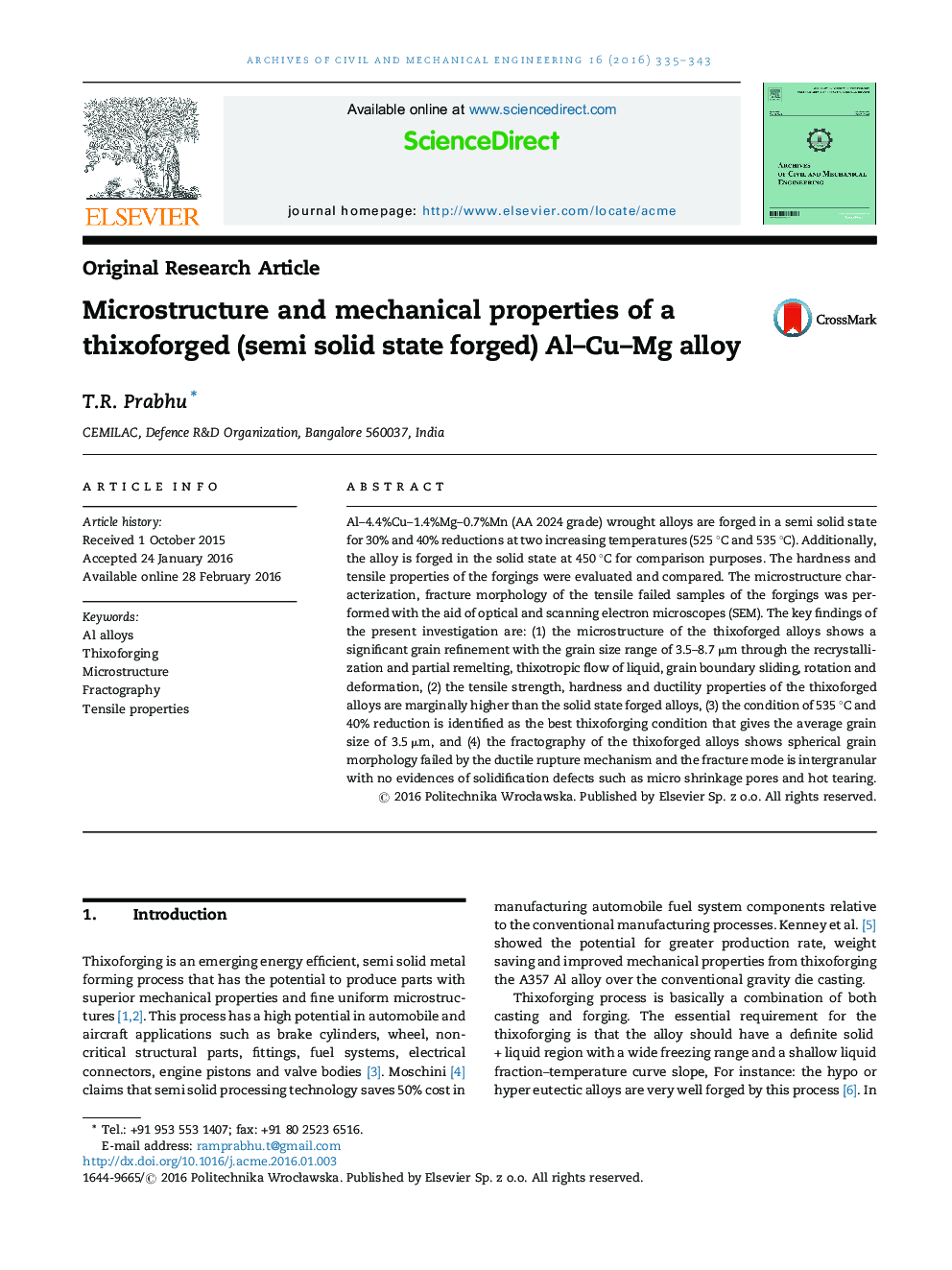| Article ID | Journal | Published Year | Pages | File Type |
|---|---|---|---|---|
| 245540 | Archives of Civil and Mechanical Engineering | 2016 | 9 Pages |
Al–4.4%Cu–1.4%Mg–0.7%Mn (AA 2024 grade) wrought alloys are forged in a semi solid state for 30% and 40% reductions at two increasing temperatures (525 °C and 535 °C). Additionally, the alloy is forged in the solid state at 450 °C for comparison purposes. The hardness and tensile properties of the forgings were evaluated and compared. The microstructure characterization, fracture morphology of the tensile failed samples of the forgings was performed with the aid of optical and scanning electron microscopes (SEM). The key findings of the present investigation are: (1) the microstructure of the thixoforged alloys shows a significant grain refinement with the grain size range of 3.5–8.7 μm through the recrystallization and partial remelting, thixotropic flow of liquid, grain boundary sliding, rotation and deformation, (2) the tensile strength, hardness and ductility properties of the thixoforged alloys are marginally higher than the solid state forged alloys, (3) the condition of 535 °C and 40% reduction is identified as the best thixoforging condition that gives the average grain size of 3.5 μm, and (4) the fractography of the thixoforged alloys shows spherical grain morphology failed by the ductile rupture mechanism and the fracture mode is intergranular with no evidences of solidification defects such as micro shrinkage pores and hot tearing.
